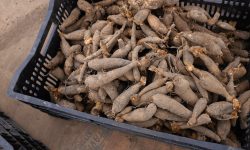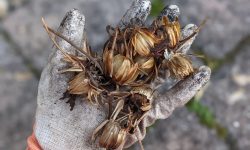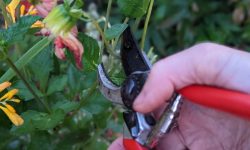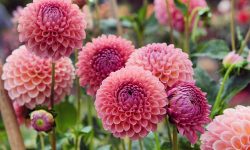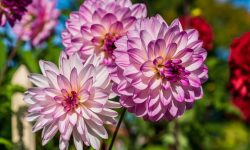Roses are celebrated worldwide for their beauty, fragrance, and symbolism. Whether climbing along fences, blooming in pots, or filling entire gardens with color, these flowers have a magical way of capturing attention. But one common question unites gardeners everywhere: When do roses bloom? The answer varies depending on your local climate, the type of rose you’re growing, and how well you care for it throughout the year.
Timing your expectations is just as important as the planting process itself. While roses are known for their dramatic spring and summer displays, not all regions experience the same blooming periods. Temperature shifts, length of daylight, and winter dormancy play critical roles in determining exactly when your rose bushes will burst into bloom.
If you’ve ever looked at your neighbor’s thriving rose garden and wondered why yours isn’t flowering yet, understanding your region’s specific rose-blooming schedule might be the key. In this article, we’ll explore rose blooming times across different U.S. regions, and how local conditions impact the flowering cycle. You’ll also find helpful insights to extend the bloom period and make the most of your rose-growing season.
Understanding the Rose Blooming Cycle

Before diving into regional differences, it’s important to understand the natural cycle of a rose. Most modern roses, especially hybrid teas, floribundas, and shrub varieties, are repeat bloomers. These types typically flower in cycles, starting in late spring and continuing through summer and into early fall, with a short rest between each flush. Other roses, like heirloom or old garden roses, may bloom only once per season, typically in spring.
Roses go dormant in winter, conserving energy to push out fresh growth once temperatures rise. The first signs of blooming usually follow a period of active leaf and stem development. Flower buds appear once the plant has built enough strength to support them. This makes timing highly dependent on local frost patterns and soil warmth.
Sunlight also plays a crucial role in the blooming process. Roses require at least six hours of direct sunlight daily to produce abundant flowers. In areas with less sunlight or cooler temperatures, blooms may arrive later or appear less frequently. This is why understanding your USDA Hardiness Zone can be a great starting point for predicting your rose’s bloom schedule.
When Do Roses Bloom in the Northeast?
In the northeastern United States, which includes states like New York, Massachusetts, and Pennsylvania, roses generally begin blooming in late May or early June. Winters in this region can be harsh, often delaying the start of the blooming season until the risk of frost has completely passed. Because the growing season is relatively short, most gardeners choose repeat-blooming roses to enjoy flowers through the summer.
Cool springs can result in a slow awakening from dormancy, and it’s not uncommon for the first buds to appear just as late spring warms up. These blooms typically peak in mid-June, followed by intermittent flowering cycles throughout July and August. Pruning roses in early spring and feeding them with a balanced fertilizer encourages better blooms during this limited growing window.
In cities with urban heat islands, like Boston or Philadelphia, you might see roses bloom slightly earlier than in rural areas. This is due to increased warmth around buildings and pavement, which can help roses wake up sooner. Gardeners in the Northeast must remain vigilant about sudden cold snaps in April or early May that could damage tender new growth before blooming begins.
Rose Blooming Season in the Southeast
The Southeast, including states like Georgia, the Carolinas, and northern Florida, enjoys a much longer growing season. Roses in this region can begin blooming as early as late March or April, especially during milder years. The earlier onset of spring allows roses to flourish sooner, often producing several heavy blooming cycles before the intense summer heat sets in.
With high humidity and frequent rainfall, roses in the Southeast require extra care to prevent fungal diseases like black spot and powdery mildew. Despite these challenges, the region’s warmth supports vigorous rose growth, often resulting in blooms that continue into October or even November. Pruning in late winter or very early spring ensures the plants are ready to take full advantage of the early blooming window.
The Southeast’s subtropical climate allows for year-round foliage in some areas, though true blooming halts during the colder months. In southernmost parts of Florida, some roses might bloom sporadically throughout winter, making this one of the rare regions where roses don’t go fully dormant. However, the most spectacular flushes still occur in spring and fall, when temperatures are milder.
Bloom Times in the Midwest
Midwestern states like Illinois, Ohio, and Michigan experience four distinct seasons, which heavily influence rose blooming schedules. Most roses begin to bloom in late May or early June after the final frost. In some northern areas, blooming may not begin until mid-June. Once started, the season typically lasts until September, with a few breaks between flushes.
Cold winters cause roses to enter deep dormancy, and early spring growth is often delayed until soil temperatures rise above 50°F. Gardeners who mulch and protect their roses over winter usually see more robust spring growth and earlier blooms. The intensity of summer in the Midwest—especially in July—can sometimes stress the plants, reducing bloom quality unless proper watering and mulching are maintained.
Roses in the Midwest benefit from the long daylight hours of summer, which help fuel photosynthesis and support strong flower development. Regular deadheading, feeding, and pruning ensure repeat blooms into the early fall. As temperatures begin to drop in September, the final flush of blooms often carries a deeper color and stronger fragrance than summer flowers.
Western U.S. Rose Bloom Timing
In the western United States, blooming times vary widely depending on the specific climate zone. Coastal areas of California, for example, enjoy one of the longest rose-blooming seasons in the country. In cities like Los Angeles and San Diego, roses can bloom nearly year-round, with peak displays from March through June and again in late fall. Mild winters and abundant sunshine create ideal conditions for continuous flower production.
Further inland, in places like Nevada or eastern Washington, bloom times shift significantly. These areas experience greater temperature fluctuations and lower humidity, so blooming often begins in late April or early May and continues through September. However, scorching summer temperatures may pause flower production during July and August until cooler temperatures return.
In the Pacific Northwest, including Oregon and western Washington, roses typically begin blooming in late May or early June. The cool, damp climate slows spring growth but encourages lush foliage and large blooms once the season kicks in. Summer blooming is strong and steady, extending into September or early October depending on weather conditions.
Rose Blooming in the Southwest
The arid Southwest, including Arizona, New Mexico, and parts of Texas, presents a unique challenge for rose growers. In these regions, roses can begin blooming as early as March, with a second, more dramatic flush in fall—usually September or October—after the intense summer heat subsides. Spring is typically the most productive season for blooming in these dry, sunny climates.
High desert conditions demand thoughtful rose care. Gardeners often use drip irrigation and mulch to retain soil moisture and protect the roots from overheating. Although the dry air helps prevent fungal diseases, it can also cause blooms to dry out faster. Selecting heat-tolerant rose varieties is key to ensuring multiple blooming cycles through the year.
Unlike more temperate regions, the Southwest has distinct blooming “windows” rather than a continuous season. The summer lull, caused by extreme temperatures, is a period of rest for many rose bushes. With the arrival of cooler autumn weather, roses often respond with another flush of vibrant, fragrant flowers that last into early November.
Southern California and Year-Round Blooms
Southern California offers one of the most forgiving climates for rose cultivation. Thanks to its Mediterranean-like weather, roses can bloom nearly all year, especially in areas near the coast. The combination of mild winters, low humidity, and long sunny days creates near-perfect growing conditions for roses.
Peak blooming in Southern California occurs in spring—from March through May—and again in fall, around September to November. The hot summer months might slightly reduce bloom size and frequency, but proper irrigation and pruning help maintain consistent flowering. With little to no risk of frost, roses don’t enter deep dormancy, making continuous care and feeding feasible year-round.
Inland areas like Riverside or San Bernardino may experience more extreme heat, which can stress rose bushes in summer. However, with protection and heat-tolerant varieties, these regions still enjoy multiple blooming cycles. Gardeners in Southern California often stagger pruning and fertilizing schedules to maximize bloom production throughout the calendar year.
Alaska and Northern Bloom Schedules
In Alaska and other far northern regions, the blooming season is significantly shorter but still vibrant. Roses begin to bloom in June and typically last through August or early September. Hardy rose varieties specifically bred for cold climates are necessary for success in these areas.
The intense daylight hours during summer provide a strong push for growth and flowering, even if the season starts late. Once blooming begins, the long days allow roses to develop rapidly and produce high-quality blossoms. Gardeners often start roses indoors or in greenhouses to get a head start on the short growing window.
Cold-hardy species like rugosa roses thrive in northern conditions, producing beautiful, fragrant blooms in a compact time frame. Although the season is brief, the dramatic burst of color from these roses during Alaska’s summer months is often more appreciated due to its rarity.
Tips to Extend Your Rose Blooming Season
No matter where you live, there are practical ways to help your roses bloom longer. Consistent care, including watering, feeding, pruning, and pest management, encourages repeat blooming. Regular deadheading—removing spent blooms—prevents the plant from going to seed and stimulates fresh flower production.
Using mulch helps regulate soil temperature and retain moisture, which is especially beneficial in both cold and dry regions. Fertilizing roses during active growth periods with a balanced, rose-specific fertilizer promotes strong root systems and more flower buds. In areas with multiple blooming windows, adjusting your care routine seasonally ensures optimal results.
Choosing rose varieties suited to your climate also makes a significant difference. Some roses are bred for hot weather, others for cold endurance, and some are best suited for humid regions. By matching your rose selection with your local environment, you improve your chances of enjoying consistent, long-lasting blooms year after year.
Frequently Asked Questions About When Roses Bloom
When do roses usually start blooming?
Roses typically start blooming in late spring, around April to June, depending on the climate and the specific variety. In warmer regions, blooms can appear as early as March, while colder areas may not see flowers until mid-June.
How long do roses bloom during the year?
Many modern rose varieties bloom in cycles from spring through fall. In most regions, roses bloom from late spring to early autumn, with a few resting periods between flushes. In mild climates like Southern California, roses may bloom nearly year-round.
Do all types of roses bloom at the same time?
No, different types of roses bloom at different times. Hybrid teas and floribundas are repeat bloomers, producing flowers throughout the season, while some heirloom or once-blooming roses may only bloom in late spring or early summer.
Can I make my roses bloom earlier?
Yes, you can encourage earlier blooms by pruning in late winter or early spring, applying balanced fertilizer, and ensuring adequate sunlight and water. Starting roses in a greenhouse or using row covers can also help in colder climates.
Why are my roses not blooming?
Roses may fail to bloom due to insufficient sunlight, poor pruning practices, lack of nutrients, or pest and disease problems. Over-fertilizing with nitrogen-heavy products can also cause lush foliage but few flowers.
Do roses bloom in the first year after planting?
Many roses will produce a few blooms in their first year, especially container-grown ones. However, full blooming potential typically develops in the second or third growing season once the root system is well established.
What month do roses bloom the most?
Roses often reach peak bloom in May or June, depending on location. In warmer areas, peak bloom can occur earlier in spring and again in fall. Repeat-blooming varieties may have several peak periods during the growing season.
Can roses bloom in fall or winter?
In warmer climates like southern California or Florida, roses may continue blooming into late fall or even winter. However, in colder climates, blooming generally stops by late September or October as the plant enters dormancy.
Conclusion
Roses are among the most cherished garden flowers, and their blooming times reflect the diversity of climates across the U.S. While some regions enjoy roses for many months or even year-round, others must wait patiently for a short but dazzling display. Understanding your local conditions—temperature, light, humidity, and frost patterns—can help you better anticipate when your roses will bloom.
With the right care and attention, it’s possible to enjoy roses from early spring well into fall, regardless of your USDA zone. Whether you’re planting a new rose garden or nurturing long-established bushes, tailoring your approach to your region will reward you with an abundance of color, fragrance, and natural beauty.


